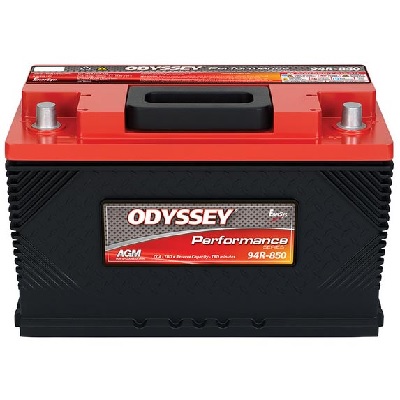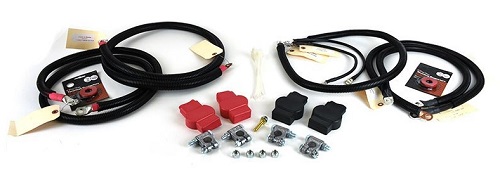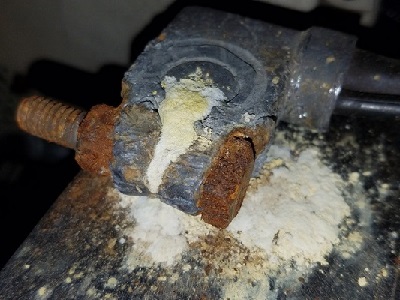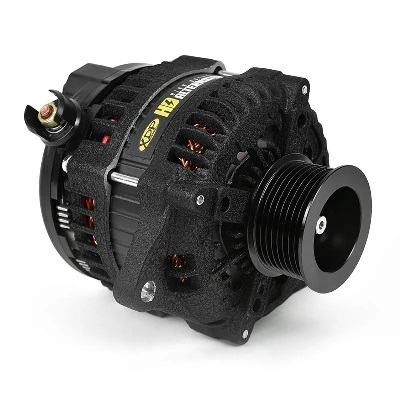The charging system in your truck is often neglected until the point of failure. Proper charging system maintenance can help extend the life of your battery and prevent you from getting stranded at an inopportune time. We will examine all the components in your charging system and how to diagnose common issues.
The Charging System in any vehicle typically consists of the battery, alternator, and battery cables. Because of their heavy-duty nature, many 3/4 ton and 1-ton diesel trucks come equipped from the factory with dual batteries and alternators.

Battery
You rely on the battery to start your truck every time you turn the key. Whether you are driving to work or just hitting the trails for a day of fun, you need to know that your battery is up to the task. Unfortunately, batteries do not last forever and even new batteries will eventually need to be replaced.
Lifespan
The average life expectancy of a battery is typically considered around three to six years. There are several factors that can have an impact on that estimate. Even under the most ideal conditions, chemical reactions cause batteries to break down.
Though battery problems are often associated with cold weather, heat is actually a bigger enemy. Hot temperatures take a bigger toll on performance and reserve capacity than the cold. Heat can also decrease a battery’s lifespan significantly. Hot weather causes the liquid inside a battery to evaporate as well as cause internal damage. This can occur whether you are driving or when the vehicle is simply parked.
When you start your truck in the cold, the starter requires more electrical current to turn over the cold engine. If your truck will not start on a below-freezing day, it is probably due to the extreme heat the battery was subjected to during the summer.
Leaving your vehicle parked or stored for prolonged periods of time can also lead to a dead or weakened battery that can require a recharge (or replacement). Testing a battery’s performance and reserve capacity is not just a matter of seeing whether it will hold a charge. Adding a Handheld Battery & Electrical System Tester such as the Autometer BVA-300 to your toolbox can be a good investment. This will help you diagnose all types of battery and alternator-related issues.
When to Change Your Truck’s Battery
There are several signs to indicate the battery in your truck is failing and needs to be replaced. Sluggish engine cranking and unusual electrical problems like headlights that are dim or flickering are telltale signs of trouble, though they may also indicate problems with your truck’s alternator. You should also replace your battery if it develops a rotten egg smell or the case begins to bulge.
Many heavy-duty diesel trucks come with dual batteries. If your truck has two batteries, it is recommended that the pair are replaced at the same time.
Battery Cables

Battery cables are an important part of any electrical system. They are used to supply power from the battery to the starter solenoid and as a connection to a ground (i.e. the frame). Battery cables can range in size from 4/0 to 6 AWG. The conductor material for battery cables is typically constructed of stranded copper wire. This provides some flexibility and is used as a connection to other units that draw high amounts of current. They need to be able to handle the amps that will be drawn and need protection against heat, oil, and battery acid. Battery cables often come with thick insulation to provide extra protection against cuts, tears, and abrasions from rubbing against machine parts.
While their construction and purpose are relatively simple in design, battery cables can still fail. When they do fail it can cause all sorts of problems for a truck. When a problem with battery cables does develop, the vehicle will produce a few symptoms that can alert you that a problem has occurred and should be serviced.
1. Starting Problems
The battery cables transfer power from the battery to the vehicle’s entire electrical system. Starting a truck takes a considerable amount of cranking power. Any damage or wear with battery cables can reduce their ability to conduct full power. This can cause many issues, such as getting your vehicle started. You may experience intermittent or slow cranking, as well as clicking sounds during cranking. These usually occur from not enough current being able to pass through the cables to start the truck.
2. Corrosion
Another symptom of a bad or failing cable is the presence of corrosion on the terminals. Corrosion can develop from the acidic vapor produced by the battery. Over time, the vapor can begin to corrode the terminals and cause corrosion to build up. Corrosion increases resistance around the contact surface of the terminal. In severe situations, it can completely block the flow of electricity.
3. No Power
Another symptom commonly associated with bad or failing battery cables is no power to the truck. If the cables become split or corroded and do not make a good connection with the battery, then the vehicle might not receive power. You may notice that turning the key does not activate the accessory power, crank the engine, or turn on the interior lights. Usually, a closer examination of the cables and battery can reveal if the problem is related to the cables or the battery.

Battery Cable Inspection
While battery cables serve a very simple purpose, they are a very important component of your truck’s electrical system. Inspect your cables occasionally for any signs of damage, excessive corrosion, and cracks in the terminals. As the metal ages (and after numerous battery replacements), the terminals can soften up over time and even develop cracks. Always keep the terminals clean and free of corrosion. Finally, make sure there is no damage to the cables and that no bare wire is exposed. It is a good time to replace them as soon as you see any issues, rather than waiting until it leaves you stranded. Fortunately, direct-fit battery cables are available to make replacement an easy job.

Alternator
New technology is continually being added to vehicles every year. Trucks are continually being built with additional devices and more complex electrical systems. The alternator is responsible for supplying power to the battery to keep all of these devices running. From simply starting the truck and using the radio, navigation system, heated seats, power mirrors, and windows the list of equipment gets pretty long. This doesn’t even take into account popular aftermarket accessories such as light bars and plows.
How long does an Alternator last?
This answer can vary greatly, simply because there are so many factors that can affect an alternator’s life. An alternator can fail at 40,000 miles on some trucks, while others may continue to operate well after 100,000 miles. It depends on the vehicle, the engine, the conditions in which it’s used, and how much electrical equipment it’s regularly operating.
One thing that is for sure, is an alternator is a part that will not last forever. From the rotor spinning inside the alternator to the needle bearing, they can fail due to excessive wear, corrosion, or dirt that can build up inside. In addition, the diodes inside the voltage regulator can fail after time. Heat from the engine also puts an additional strain on the part, decreasing its overall longevity.
Signs your Alternator is Failing
If you experience flickering headlights, stalling, or strange noises when driving chances are it’s a failing alternator. The alternator is a key component in your vehicle’s electrical system, turning the energy from the crankshaft into useful electricity to power your vehicle’s electrical systems and to help the battery recharge. When it starts to fail, it can create a domino effect of electrical problems that can ultimately cause a breakdown.
How do you know when you have a failing alternator? Here are some basic symptoms to watch for.
1. Indicator Light
Many late-model trucks are equipped with a warning light on the dashboard. This is often the first sign that the alternator is on its way out. Do not ignore this, even if you are experiencing no other symptoms. Test your alternator, or take the truck in and have it tested.
2. Dim or Flickering Headlights
Dim or Flickering headlights are another strong signal that your alternator may not be working properly. The alternator provides power to the headlights, so flickering or dimmer headlights than usual can mean the alternator is struggling.
3. Electrical Failures
When the alternator is going bad, other systems that are powered by the alternator may start to act up. These can include the power windows, power locks, dashboard lights, air conditioning, even your radio.
4. Strange noises
Sometimes alternator failures can result in unusual or loud noises. If you are hearing a strange noise listen closely to the alternator (especially if accompanied by some of the other symptoms).
6. Dead Battery
Batteries will eventually fail over time, but a bad alternator causes the battery to drain quickly because it’s failing to recharge it. If your battery goes dead, have the alternator checked when replacing the battery so it does not happen again.
Replacing the Alternator
Heavy-duty diesel trucks can come equipped with either one or two alternators. If your truck has dual alternators it is recommended that they are replaced at the same time (just like the batteries). Alternators are available in many different AMP ratings. If you are running any aftermarket/auxiliary equipment it is a good idea to upgrade to an alternator that puts out more AMP’s.
Hopefully, this information helps you keep your truck’s charging system functioning properly or helps you diagnose any issues you may be having. For more information on upgrading your truck’s charging system contact the performance specialists at XDP.
